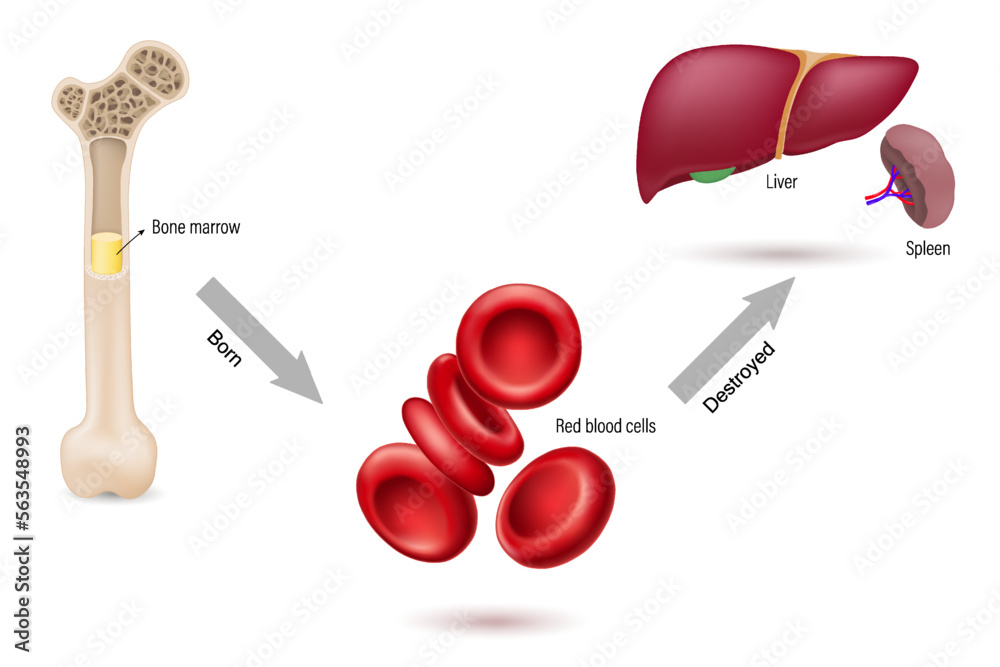Athletes today have access to endless resources for boosting their performance—elite training facilities, expert coaches, and cutting-edge recovery tools. However, one overlooked threat remains the invisible disruptor, electromagnetic fields (EMFs).
For regular readers of this site, you’re already familiar with EMFs and their impact on recovery. In previous discussions, we’ve covered how EMFs contribute to oxidative stress. Today, we’re taking a deeper dive into how EMFs can worsen issues athletes commonly face, like oxidative stress, inflammation, and even red blood cell degradation. We’ll also explore the long-term dangers, including bone marrow degradation and a weakened blood-brain barrier, that often go unnoticed but can have lasting consequences.
EMFs and Oxidative Stress: A Deadly Combo
Athletes constantly battle oxidative stress—a byproduct of intense exercise. The body’s natural response to physical exertion is to produce reactive oxygen species (ROS), which can cause cell damage if not neutralized by antioxidants. However, when exposed to EMFs, the oxidative stress that athletes experience is amplified.
Numerous studies have shown how EMFs increase oxidative stress, heightening ROS production and reducing the body’s antioxidant defenses (source). This means more cell damage, slower muscle recovery, and a higher risk of long-term injuries. In athletes, this manifests as prolonged fatigue, delayed recovery, and chronic muscle soreness.
In our recent article on oxidative stress, we explain in detail how this imbalance impairs athletic recovery. When EMFs are added to the mix, this recovery becomes even more difficult, leading to persistent fatigue and susceptibility to injuries.
Inflammation: EMFs Make It Worse
While inflammation is a natural part of muscle recovery, chronic inflammation is harmful. Prolonged inflammation can lead to joint and tissue damage, causing pain and limiting mobility—two things every athlete wants to avoid. Unfortunately, EMFs can prolong and intensify inflammation.
 One study demonstrated that EMF exposure can increase inflammatory responses in the body by activating immune cells, such as mast cells, which release inflammatory chemicals like histamine. This suggests that while you’re working hard to manage post-exercise inflammation, EMFs are quietly undoing your efforts, making inflammation worse and slowing your recovery time.
One study demonstrated that EMF exposure can increase inflammatory responses in the body by activating immune cells, such as mast cells, which release inflammatory chemicals like histamine. This suggests that while you’re working hard to manage post-exercise inflammation, EMFs are quietly undoing your efforts, making inflammation worse and slowing your recovery time.
Another study proved that man-made EMFs, “could cause the changes of cellular ultrastructure when cells are in fragile or micro-damaged condition”, showing what we already know to be true: EMFs exacerbate existing conditions. Chronic inflammation is not just the most common underlying factor for all diseases, it’s one of the most detrimental aspects of an athlete’s recovery ability.
For athletes, this means that chronic inflammation, which can already stem from overtraining, becomes even more of an issue, leading to an increased risk of overuse injuries and longer downtimes.
Blood-Brain Barrier (BBB) Degradation: A Key Vulnerability
One of the more concerning effects of EMF exposure is its impact on the blood-brain barrier (BBB). The BBB is the protective shield that prevents harmful substances from entering the brain. When it’s compromised, toxins, heavy metals, and other damaging molecules can leak into the brain, leading to oxidative stress, inflammation, and even cognitive impairments.
Research has found that EMFs can increase the permeability of the BBB, allowing more toxins and proteins to enter the brain. For athletes, this is especially concerning. The mental focus and cognitive function required for peak performance are at risk. A weakened BBB could impair decision-making, reaction time, and overall mental clarity—key components for success in competitive sports. For combat athletes and action sports athletes who are already at major risk of brain trauma, this is especially concerning.
Erythrocyte Hemolysis: EMFs Breaking Down Red Blood Cells
One of the lesser-known but equally concerning impacts of EMF exposure is erythrocyte hemolysis, the breakdown of red blood cells (RBCs). RBCs are critical for delivering oxygen to your muscles, which is especially vital during intense exercise. When RBCs break down, oxygen delivery becomes less efficient, impairing endurance and performance.
A study published in Bio Electro Magnetics found that radiofrequency (RF) fields caused hemolysis in erythrocytes, even at low exposure levels. The study observed that while the overall percentage of RBC lysis was low, it still affected the cells’ permeability, suggesting that EMFs could weaken RBC membranes, making them more susceptible to damage during physical exertion.
For athletes, this means less efficient oxygen transport and impaired performance, especially in endurance-based sports. If your body is unable to deliver adequate oxygen to your muscles, fatigue sets in faster, and recovery slows down significantly.
Bone Marrow Degradation: The Hidden Long-Term Impact of EMFs
While the effects of EMFs on RBCs are immediate, the damage to bone marrow is more long-term and insidious. Bone marrow is responsible for producing new blood cells, including red and white blood cells. If bone marrow function is compromised, the body’s ability to regenerate healthy cells is hindered, leading to immune system suppression and slower recovery from injuries.
A study published in Stem Cell Research found that low-frequency EMFs can alter the differentiation of human bone marrow stem cells, which are responsible for creating new blood cells and repairing damaged tissues. This suggests that prolonged EMF exposure could disrupt your body’s ability to regenerate blood cells and repair muscle tissue, both of which are crucial for athletes.
Additionally, research by the Journal of Physics revealed that prolonged exposure to low-frequency EMFs can significantly decrease red blood cell elasticity and impair bone marrow function in rats. This is critical information for athletes, as it indicates that EMFs are not just a short-term concern but can cause lasting damage to the body’s ability to recover and regenerate.

Cortisol and Stress Hormones: Keeping You in Fight-or-Flight Mode
One of the more well-documented impacts of EMF exposure is its effect on hormone regulation, particularly regarding cortisol, the body’s primary stress hormone. For athletes, cortisol is both a friend and a foe. In the short term, it helps manage the stress of training, but chronically elevated cortisol levels lead to muscle breakdown, reduced immune function, and weight gain—all disastrous for performance and recovery.
Studies have shown that EMFs can elevate cortisol levels, putting the body into a prolonged state of stress. Athletes already operate with higher cortisol levels due to the physical demands of training, but EMFs exacerbate this, making recovery harder and elevating the risk of overtraining.
EMFs and Sleep Disruption: A Vicious Cycle for Athletes
You’ve probably heard it before: sleep is critical for recovery. It’s when your body regenerates tissues, repairs muscles, and consolidates memory—all essential for athletic performance. However, EMFs may be subtly robbing you of quality sleep.
Research shows that EMFs disrupt melatonin production, a hormone crucial for regulating sleep cycles. With poor melatonin regulation, athletes experience less deep sleep, which is critical for muscle repair and immune system function. This sleep disruption leads to a vicious cycle of poor recovery, increased fatigue, and reduced overall performance.
Aires Tech: Your Solution to EMF Exposure

Clearly, the dangers posed by EMFs are not to be ignored, especially for athletes who already deal with stressors like oxidative stress, inflammation, and muscle fatigue. Fortunately, solutions exist to help mitigate these risks. Aires Tech has developed a range of EMF protection devices specifically designed to neutralize the harmful effects of electromagnetic radiation.
Devices like the Aires Tech Lifetune Series protect athletes from the damaging effects of EMFs by creating a barrier that modifies the way radiation interacts with your body. Whether you’re training at home, in the gym, or on the road, Aires Tech devices help minimize the impact of EMFs, allowing your body to recover fully without the interference of this invisible threat.
By incorporating Aires Tech into your daily routine, you can protect yourself from the damaging effects of EMFs, ensuring that your recovery, sleep, and overall performance aren’t compromised.
Conclusion
The impacts of EMF exposure on athletes are real and significant. From erythrocyte hemolysis and bone marrow degradation to increased oxidative stress, chronic inflammation, and even disruption of the blood-brain barrier, EMFs represent a hidden but potent threat to your performance and recovery.
For athletes who take their training seriously, EMF protection isn’t just a nice-to-have—it’s essential. By incorporating solutions like Aires Tech’s EMF protection devices, you can safeguard your health, optimize your recovery, and ensure that you’re performing at your peak, free from the invisible dangers of electromagnetic fields.
Don’t let EMFs sabotage your progress. Take control of your environment, protect your body, and perform without limits.







